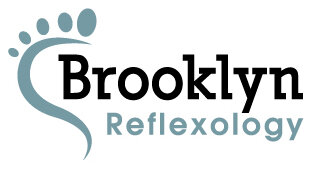Reflexology: What do your feet say about you…?
Feet come in all shapes and sizes. Some have well balanced arches with minimal callusing and a healthy appearance, while others deal with chronic foot pain due flat feet, high arches, and bunions – just to name a few. While most of us fall somewhere in the middle, it’s been reported that 80% of all adults will suffer some foot disorder during the course of their lives. Heredity can be a significant predictor of your overall foot health, but so can factors such as — the types of shoes you wear, the amount of time you spend on your feet, and whether or not you’re overweight. Add to this your mental and physical health and well being, and we start to get a clearer of picture of what your feet are saying about you.
The feet are the mirrors of the body. And since every part of the body is represented on the feet via its reflex, the appearance and sensitivity of those reflexes can hold a wealth of information about our health. Calluses and corns for example, tend to develop in areas of high friction – it’s the body’s way of protecting itself by adding more cushioning. But they could also be an indication of congestion or some other imbalance in that part of the body. Where it appears and to what extent can be of significant importance.
Bunions for example, form around the first metatarsal joint, just below the big toe. It’s true that some people inherit them from their parents, but it’s equally as true that tight, uncomfortable shoes can lead to bunion formation. When we consider the area where bunions form, we have the upper thoracic spine and neck reflexes. Could our choice in footwear be contributing to upper back and neck issues…? Whether the imbalance starts in the body or whether it starts on the feet, no one can truly say. What can be said is that there appears to be a strong connection between the two.
Flat feet and high arches are other fairly common foot conditions. The relative height of your medial arches can have a significant impact on how your weight is distributed on your feet. Most people with flat feet will have their weight shifted to the insides of their feet, while people with high arches bear their weight along the outer parts of their feet. This could have an impact on your posture and the proper functioning of the spine. People with low back pain should start with a pair of comfortable shoes with good arch support.
The tips of the toes represent the head and brain reflexes and the sides correlate to the sinuses. Issues such as hammertoe, claw toe, rigid toe, or any deformity of the toes, could create congestion in those areas but could also be representative of some imbalance that’s already present. People with high arches and those that wear open toed shoes such as sandals, are more likely to develop hammertoe.
Skin conditions such as plantar’s warts, athlete’s foot, eczema, or even just dry skin, could be used as an indicator for that part of the body’s overall health. Again, the placement and extent of the condition is key. Toenail problems such as ingrown toenails, thickened toenails, or fungal infections, could be an indicator of a poor diet or vitamin deficiency.
Pain anywhere on the foot is of significant importance and should be attended to with care. Whether it’s pain resulting from arthritis, gout, bunions, heel spurs, neuromas, or plantar fasciitis, any painful areas on the feet should be considered in relation to the whole body. The feet are our first and primary contact with the earth and the ground beneath us. Establishing a firm and secure foundation should be a top priority in our lives.
